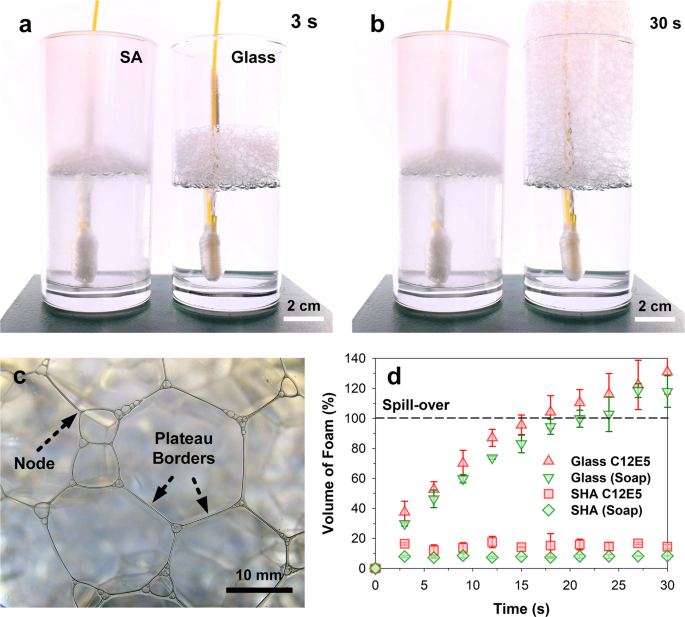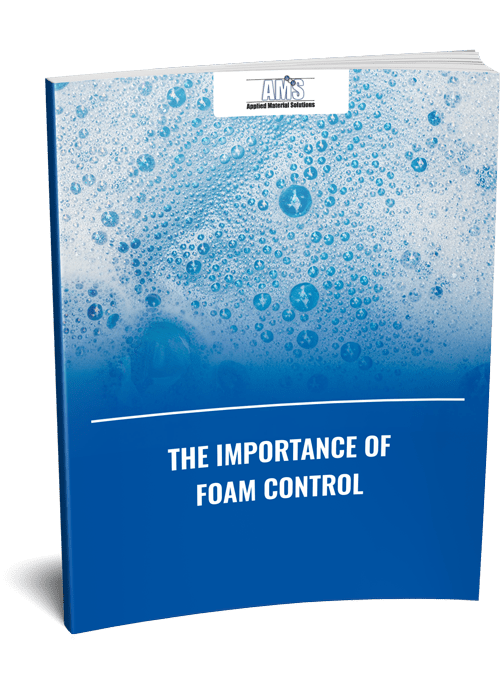Anti-Foam Control Solutions-- Efficient Foam Monitoring for Industrial Applications
Anti-Foam Control Solutions-- Efficient Foam Monitoring for Industrial Applications
Blog Article
Exactly How Anti-Foam Control Solutions Enhance Item Top Quality and Effectiveness
The role of anti-foam control services in industrial processes can not be overstated, as they are essential in enhancing both product quality and functional performance. By properly mitigating foam formation, these options not only make sure regular product appearance throughout various markets but likewise decrease the risk of contamination, which is crucial for keeping high pureness requirements.
Recognizing Foam Formation
Foam development is an usual phenomenon run into in numerous industrial procedures, often resulting from the interaction of liquids with gases or solids. This phenomenon happens as a result of the stablizing of gas bubbles within a liquid matrix, resulting in the development of a foamy layer externally. The visibility of surfactants, which reduce the surface area tension of liquids, can aggravate foam formation by helping with bubble development and stabilization.
Numerous factors influence foam advancement, consisting of the nature of the fluid, the presence of pollutants, temperature level, and anxiety degrees. As an example, high shear forces during blending can introduce more air right into the liquid, advertising bubble development. Additionally, hydrophobic and hydrophilic compounds can engage with liquid surfaces, impacting bubble stability.
Comprehending the systems of foam formation is critical for markets such as food handling, pharmaceuticals, and petrochemicals, where foam can prevent manufacturing efficiency and change product high quality. Identifying the certain problems that result in foam generation permits better style and control of processes, eventually bring about enhanced functional outcomes. Acknowledging these basic elements of foam formation establishes the phase for exploring efficient remedies to reduce its negative results in industrial applications.

Importance of Anti-Foam Solutions
While foam development can improve certain procedures, its unexpected presence usually causes significant functional difficulties throughout different sectors. The build-up of foam can block machinery, reduce effectiveness, and complicate manufacturing procedures. In manufacturing, as an example, extreme foam can prevent the precise dimension of liquids, causing disparities in item formulation. In wastewater therapy, foam can hinder aeration procedures, negatively affecting the therapy efficacy.

The importance of anti-foam options expands beyond operational effectiveness; they likewise play an essential role in maintaining safety and security standards. In markets such as food and drink processing, where hygiene is extremely important, controlling foam can stop contamination threats related to overflow and spillage. Eventually, the execution of anti-foam solutions is necessary for maximizing production processes, protecting devices, and making certain compliance with industry policies. Their function is crucial in advertising overall operational excellence across diverse industries.
Advantages to Item High Quality
Efficient anti-foam options dramatically boost item high quality across various industries by ensuring regular solution and protecting against the intro of pollutants. The existence of foam during manufacturing procedures can cause variability in product features, which inevitably impacts the end user's experience. By minimizing foam development, these services help with consistent blending and dispersion of ingredients, causing a product that meets rigorous high quality standards.
Moreover, anti-foam representatives help keep ideal viscosity and appearance, which are vital for products such as layers, food, and drugs. Anti-Foam Control Solutions. A stable solution is not only cosmetically attractive but additionally functionally exceptional, ensuring that products perform as meant. Additionally, the decrease of foam minimizes the danger of contamination, as trapped air can present unwanted bacteria or international bits that endanger product honesty
In applications like fermentation or chain reaction, reliable anti-foam solutions sustain optimal yield and item consistency, which are necessary for maintaining brand online reputation and client contentment. By prioritizing item top quality, producers can cultivate trust and loyalty among consumers, inevitably contributing to long-lasting success in the industry.
Enhancing Functional Performance
A considerable decrease in foam can result in improved functional efficiency in producing procedures throughout various industries. When foam is lessened, it enables smoother operations, thus minimizing downtime linked with foam-related issues. Extreme foam can trigger overflow, interfere with tools capability, and necessitate frequent maintenance interventions, all of which contribute to ineffectiveness and raised functional prices.
By executing reliable anti-foam control options, manufacturers can enhance their processes, leading to boosted throughput and efficiency. The decrease of foam helps with far better blending and reaction times in chemical procedures, which is critical in markets such as food manufacturing, pharmaceuticals, and wastewater therapy. Furthermore, with a much more secure process atmosphere, suppliers can achieve a lot more regular product outcome, therefore enhancing general functional integrity.
Furthermore, boosted functional performance can lead to cost savings in basic materials and power intake. When foam is regulated effectively, resources are utilized better, causing a decrease in waste and functional prices. Subsequently, companies are much better placed to fulfill manufacturing targets and react to market needs promptly, inevitably adding to a more powerful affordable advantage in the market.
Selecting the Right Anti-Foam Representative
Picking Source the proper anti-foam representative is crucial for sustaining the operational efficiency obtained via efficient foam control. The option of agent can significantly impact both the efficiency of the process and the quality of the final item. Aspects such as the nature of the foam, the processing environment, and the details application has to be thought about to guarantee optimal outcomes.
Anti-foam agents can be categorized right into two primary kinds: non-silicone-based and silicone-based. Silicone agents are recognized for their premium efficiency in high-temperature and high-shear applications, while non-silicone representatives may be preferred in sectors like food and drink because of regulatory factors to consider. It is important to review the compatibility of the anti-foam representative with the procedures and materials included.
Additionally, the focus of the anti-foam representative plays an important function; excessive usage can result in adverse influence on item high quality, while not enough amounts might stop working to control foam effectively. Conducting detailed testing and pilot tests can help determine one of the most suitable anti-foam representative for a Recommended Site specific application, eventually boosting both product high quality and operational efficiency.
Final Thought
In final thought, anti-foam control remedies play an essential role in improving item top quality and functional performance throughout numerous sectors. By decreasing foam development, these remedies make certain regular blending and item structure while reducing contamination risks.
By efficiently mitigating foam formation, these solutions not just make certain regular item structure across various fields yet additionally lessen the danger of contamination, which is important for maintaining high pureness criteria.Comprehending the systems of foam formation is critical for sectors such as food processing, pharmaceuticals, and petrochemicals, where foam can prevent manufacturing efficiency and alter why not check here item high quality. The presence of foam during production procedures can lead to variability in product qualities, which ultimately impacts the end customer's experience. By reducing foam formation, these options help with consistent blending and dispersion of ingredients, resulting in a product that satisfies stringent top quality requirements.
Selecting the proper anti-foam agent is essential for sustaining the functional effectiveness gained via effective foam control.
Report this page